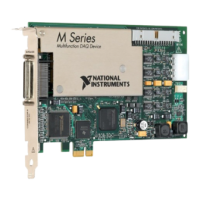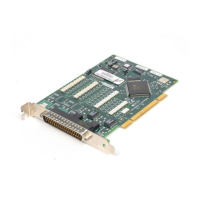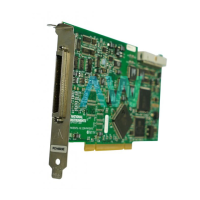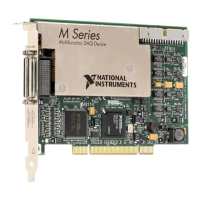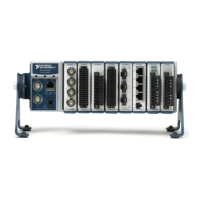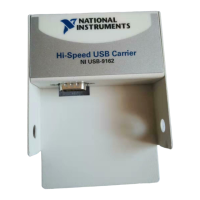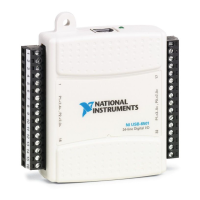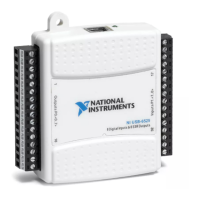4-52 | ni.com
Chapter 4 Analog Input
Note (NI USB-6356/6366 and PXIe-6378 Devices) Some X Series devices
internally transfer data in sample pairs, as opposed to single samples. This
implementation allows for greater data throughput. However, if an acquisition on
these devices acquires an odd number of total samples, the last sample acquired
cannot be transferred.
To ensure this condition never occurs, NI-DAQmx adds a background channel for
finite acquisitions that have both an odd number of channels and an odd number of
samples-per-channel. The background channel is also added when performing any
reference-triggered finite acquisition. Data from the background channel is only
visible when reading in RAW mode.
For maximum efficiency in bus bandwidth and onboard FIFO use, use an even
number of samples-per-channel or an even number of channels for finite acquisitions,
so the background channel is not added.
Reference triggers are not retriggerable.
Using a Digital Source
To use AI Start Trigger with a digital source, specify a source and an edge. The source can be
any of the following signals:
• PFI <0..15>
•RTSI <0..7>
• Counter n Internal Output
• PXI_STAR
• PXIe_DSTAR<A,B>
The source can also be one of several other internal signals on your DAQ device. Refer to Device
Routing in MAX in the NI-DAQmx Help or the LabVIEW Help for more information.
You can also specify whether the measurement acquisition begins on the rising edge or falling
edge of AI Start Trigger.
Using an Analog Source
When you use an analog trigger source, the acquisition begins on the first rising edge of the
Analog Comparison Event signal.
Routing AI Start Trigger to an Output Terminal
You can route AI Start Trigger out to any PFI <0..15>, RTSI <0..7>, or PXIe_DSTARC
terminal. The output is an active high pulse. All PFI terminals are configured as inputs by
default.
